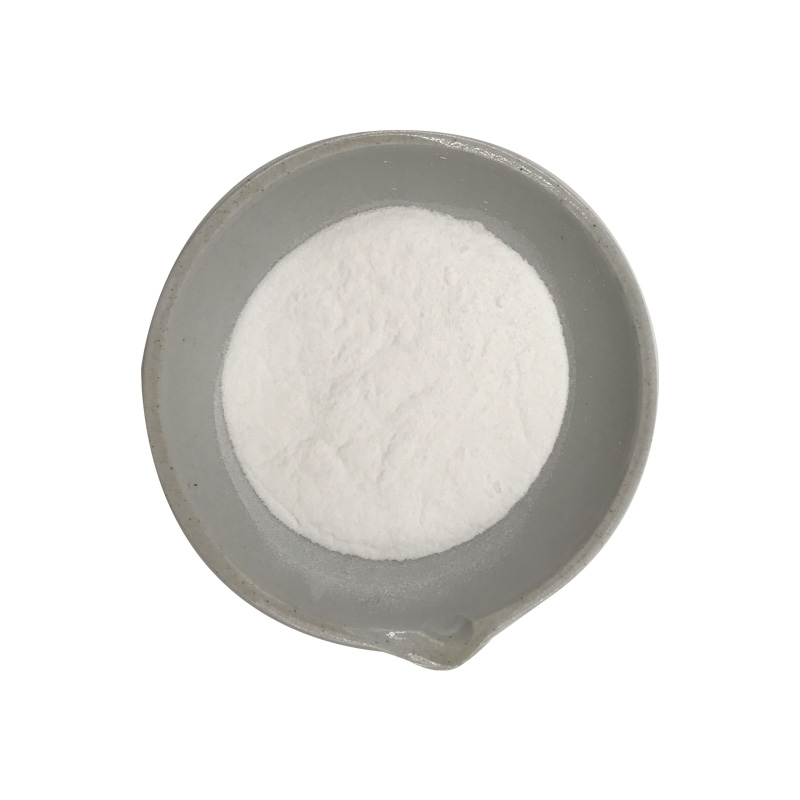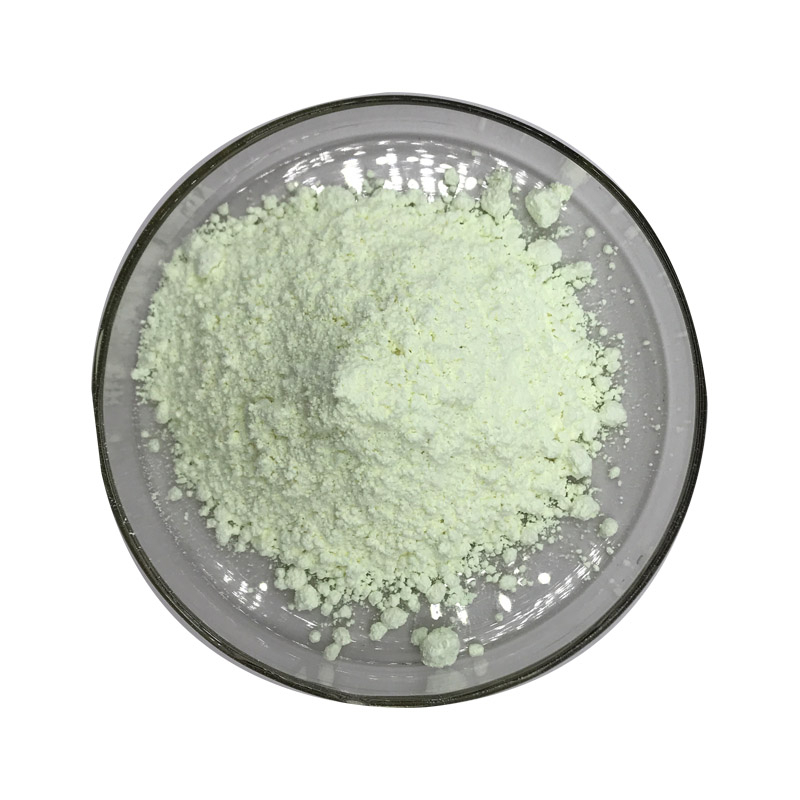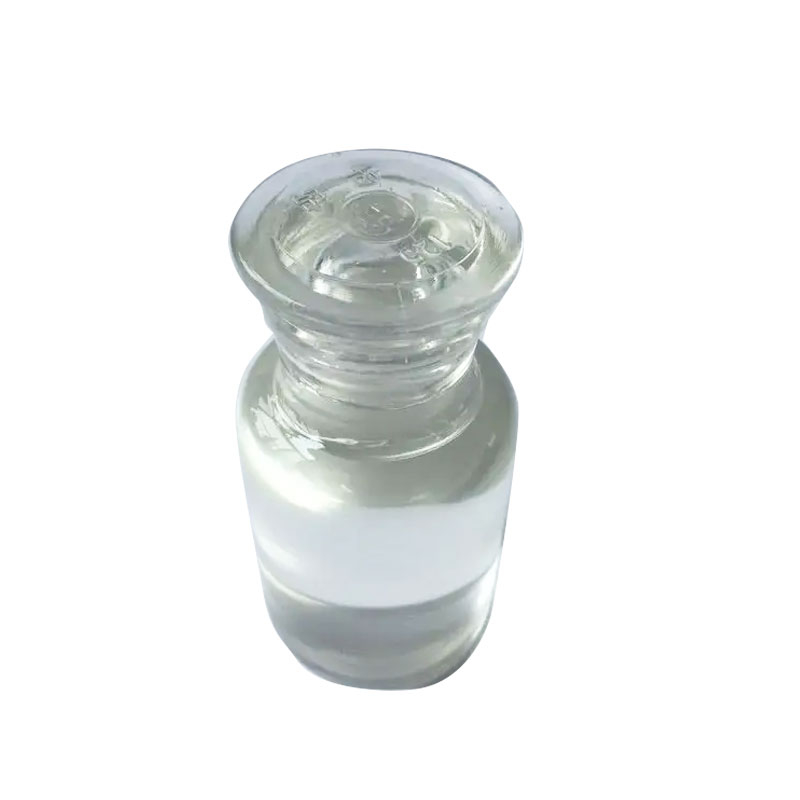Products Description of L-GLUCOSE CAS#921-60-8L-glucose is the enantiomer of D-glucose, a naturally occurring carbohydrate used in numerous cellular processes.L-GLUCOSE Chemical PropertiesMelting point 153-156 °C(lit.)Boiling point 232.96°C (rough estimate)density 1.2805 (rough estimate)refractive index -52 ° (C=5, H2O)storage temp. 2-8°Csolubility H2O: 0.1 g/mL, clear, colorlessform aqueous ethanol solutionpka12.45±0.20(Predicted)color WhiteWater Solubility Soluble in water, alcohol.Merck 14,4459BRN 1724626Stability:Stable.
ติดต่อตอนนี้
Products Description of L-Arginine L-glutamate CAS#4320-30-3 White powder; Odorless or slightly odorous; with a special taste. Decomposes when heated to 193-194.6℃. 100ml. 25% aqueous solution contains 13.5g of arginine and 11.5g of glutamic acid.
ติดต่อตอนนี้
Products Description of L-Arginine-L-Aspartate CAS#7675-83-4L-Arginine L-aspartate Chemical PropertiesMelting point 220-221 °Cstorage temp. 2-8°Csolubility Very soluble in water, practically insoluble in alcohol and in methylene chloride.color White to Off-WhiteStability:HygroscopicLogP-1.287 (est)CAS DataBase Reference7675-83-4(CAS DataBase Reference)EPA Substance Registry SystemArginine aspartate (7675-83-4)Product Application of L-Arginine-L-Aspartate CAS#7675-83-4Used as cosmetic amino acid nutrient, amino acid nutrient food additive, etc.
ติดต่อตอนนี้
Products Description of L-carnitine CAS#541-15-1Carnitine is a type of B vitamin, and its structure is like an amino acid, so some people classify it as an amino acid. Its main role is to help transport long-chain fatty acids to provide energy. This prevents fat accumulation in the heart, liver and skeletal muscles.Synthetic carnitine is available in three forms: L-carnitine, D-carnitine and racemate. L-carnitine is more effective. L-carnitine is a compound with multiple physiologically active functions.
ติดต่อตอนนี้
Products Description of METHYL-(TETRAHYDRO-PYRAN-4-YL)-AMINE HCL CAS#220641-87-2N-Methyltetrahydro-2H-pyran-4-amine is a pharmaceutical intermediate, which can be prepared by reductive amination reaction of tetrahydro-4H-pyran-4-one and methylamine.METHYL-(TETRAHYDRO-PYRAN-4-YL)-AMINE HCL Chemical PropertiesBoiling point 165.0±33.0 °C(Predicted)density 0.93±0.1 g/cm3(Predicted)storage temp. under inert gas (nitrogen or Argon) at 2–8 °Cpka10.01±0.20(Predicted)form liquidcolor Clear, colourlessBoiling point 165.0±33.0 °C(Predicted)density 0.93±0.1 g/c
ติดต่อตอนนี้
Products Description of L-Histidine hydrochloride monohydrate CAS#5934-29-2White crystals or crystalline powder. Odorless. Slightly sour and bitter. Melts and decomposes at about 250% (after drying). Stable in nature. Aqueous solution is acidic (pH 3.5-4.5). Easily soluble in water (39g/100ml, 24℃), much more solubility in water than L-histidine. Insoluble in ethanol and ether. It is a quasi-essential amino acid (essential amino acid for infants and young children), and is synthesized slowly in the human body. Lack of it can lead to developmental delay, eczema and other symptoms.
ติดต่อตอนนี้
l-Glutamic acid, N-coco acyl derivs., disodium salts Chemical Propertiesdensity 1.318[at 20℃]vapor pressure 0Pa at 20℃pka1.52[at 20 ℃]Water Solubility 450g/L at 20℃LogP-4.48 at 20℃EPA Substance Registry SystemL-Glutamic acid, N-coco acyl derivs., disodium salts (68187-30-4)Factory and Equipment ShowFast delivery timeInventory 2-3 working days New production 7-10 working days
ติดต่อตอนนี้
Products Description of Guanidine carbonate CAS#593-85-1Guanidine carbonate is a chemical substance with the chemical formula C2H10N6H2CO3 and its appearance is a white crystalline powder.Guanidine carbonate Chemical PropertiesMelting point >300 °C(lit.)density 1.25vapor pressure 0Pa at 25℃storage temp. Store below +30°C.solubility 450g/lform Crystalline Powderpka12.5[at 20 ℃]color White to almost whitePH11.7 (110g/l, H2O, 20℃)Water Solubility 450 g/L (20 ºC)BRN 3628359InChIKeyKMSRVXJGTIRNNK-UHFFFAOYSA-NLogP-1.63 at 20℃CAS DataBase Refe
ติดต่อตอนนี้
Products Description of Poly(L-lysine hydrobromide) CAS#25988-63-0Antioxidants, Chelating Agents, PreservativesPoly(L-lysine hydrobromide) Chemical Propertiesstorage temp. 2-8°Cform lyophilized powderStability:Stable. Incompatible with strong acids, strong bases. Safety InformationWGK Germany 3F 3-10Product Application of Poly(L-lysine hydrobromide) CAS#25988-63-0Only a trace amount of polylysine needs to be added to food to be effective, and it will not affect the taste of the food. It can be used as a natural preservative for food.
ติดต่อตอนนี้
L-(+)Sodium glutamate CAS#142-47-2 L-(+)Sodium Glutamate is a premium-grade food additive widely used as a flavor enhancer, renowned for its ability to intensify savory (umami) tastes in culinary applications.
ติดต่อตอนนี้
Products Description of N-LAUROYL-L-GLUTAMIC ACID CAS#3397-65-7N-(1-oxododecyl)-L-glutamic acid (9CI) is a chemical whose English name is L-Glutamicacid, N-(1-oxododecyl)-.N-LAUROYL-L-GLUTAMIC ACID Chemical PropertiesMelting point 95-96 °CBoiling point 543.6±40.0 °C(Predicted)density 1.081±0.06 g/cm3(Predicted)storage temp. Sealed in dry,Room Temperaturesolubility Aqueous Base (Slightly), Chloroform (Slightly)form Solidpka3.46±0.10(Predicted)color White to Off-WhiteLogP2.964 (est)EPA Substance Registry SystemL-Glutamic acid, N-(1-oxododecyl)- (3397-65-7)
ติดต่อตอนนี้
Products Description of Tetrabutyl ammonium chloride CAS#1112-67-0Tetrabutylammonium chloride is a chemical substance with the chemical formula C16H36ClNTetrabutyl ammonium chloride Chemical PropertiesMelting point 83-86°Cdensity 0.98refractive index 1,421-1,423Fp >110°Cstorage temp. Store below +30°C.solubility H2O: 20 mg/mL, clear, colorlessform Crystalline Solidcolor White to brownishPH5-8 (100g/l, H2O, 20℃)PH Range5 - 8 at 100 g/l at 20°CWater Solubility SOLUBLESensitive Light Sensitiveλmaxλ: 220 nm Amax: 0.05λ: 230 nm Amax: 0.
ติดต่อตอนนี้
Products Description of Tin sulfate CAS#7488-55-3White or light yellow crystalline powder. Soluble in water, solubility 33g/100ml water at 35℃. Soluble in dilute sulfuric acid.Stannous sulfate Chemical PropertiesMelting point 360 °Cdensity 4,15 g/cm3vapor pressure 0Pa at 20℃storage temp. no restrictions.form SolidSpecific Gravity1.35color White to off-whitePH1.6 (50g/l, H2O, 20℃)Water Solubility 330 g/L (20 ºC)Merck 14,8790Exposure limitsACGIH: TWA 2 mg/m3NIOSH: IDLH 100 mg/m3; TWA 2 mg/m3Stability:Stable, but moisture sensitive.
ติดต่อตอนนี้
Products Description of 2-Dimethylaminoisopropyl chloride hydrochloride CAS#4584-49-0Hydrochloride salt of 2-Dimethylaminoisopropyl Chloride, used in the synthesis of analogues of lipophilic chalcones, which act as antitubercular agents.2-Dimethylaminoisopropyl chloride hydrochloride Chemical PropertiesMelting point 187-190 °C(lit.)storage temp. Store below +30°C.solubility 2000g/lform Crystalline Powdercolor White to light creamPH5-6 (500g/l, H2O, 20℃)Water Solubility 2000 g/L (20 º C)Sensitive HygroscopicBRN 3670215InChIInChI=1S/C5H12ClN.ClH/
ติดต่อตอนนี้
Products Description of 1,3-Dimethylurea CAS#96-31-11,3-Dimethylurea, an organic chemical substance, CAS number: 96-31-1, molecular formula: C3H8N2O.1,3-Dimethylurea Chemical PropertiesMelting point 101-104 °C(lit.)Boiling point 268-270 °C(lit.)density 1.142vapor pressure 6 hPa (115 °C)refractive index 1.4715 (estimate)Fp 157 °Cstorage temp. Store below +30°C.solubility H2O: 0.1 g/mL, clear, colorlesspka14.57±0.46(Predicted)form Crystalscolor WhitePH9.0-9.5 (100g/l, H2O, 20℃)Water Solubility 765 g/L (21.5 ºC)BRN 17
ติดต่อตอนนี้
Products Description of Iridium(III) chloride hydrateCAS#14996-61-3Green crystals or brown powder, easily absorbs moisture, dissolves in water and hydrochloric acid, loses crystal water when exposed to strong heat.Iridium(III) chloride hydrate Chemical PropertiesMelting point 763°C (dec.)density 5.3 g/mL at 25 °C(lit.)storage temp. Inert atmosphere,Room Temperaturesolubility 623.82g/l solubleform Crystalscolor BlackPH<2 (H2O, 20℃)Aqueous solutionWater Solubility Soluble in water and alcohol.Merck 14,5088Stability:hygroscopicInChIIn
ติดต่อตอนนี้
Products Description of L-Threonic acid magnesium salt CAS#778571-57-6Magnesium L-threonate (MgT, pronounced "Mag T") is a chemical substance discovered by Professor Liu Guosong and a team from Tsinghua University and MIT.L-Threonic acid magnesium salt Chemical Propertiesstorage temp. Inert atmosphere,Room TemperatureInChIInChI=1S/2C4H8O5.Mg/c2*5-1-2(6)3(7)4(8)9;/h2*2-3,5-7H,1H2,(H,8,9);/q;;+2/p-2InChIKeyYVJOHOWNFPQSPP-UHFFFAOYSA-LSMILESC(C1=O[Mg+2]2(O=C(C(O)C(O)CO)[O-]2)[O-]1)(O)C(O)COProduct Application of L-Threonic acid magnesium salt CAS#778571-57-6Magnesium, as a
ติดต่อตอนนี้
Products Description of Dextrin CAS#9004-53-9White amorphous powder, odorless, slightly sweet taste.Dextrin Chemical PropertiesMelting point 53.75-54 °Cdensity 0.8 g/cm3storage temp. Store at RT.solubility H2O: 0.1 g/mL hot, complete, yellow to very deep yellowform powdercolor yellowOdorodorlessWater Solubility Soluble in hot water (0.1 g/ml).Sensitive HygroscopicMerck 14,2953Dielectric constant2.2(Ambient)Stability:Stable. Combustible.
ติดต่อตอนนี้
Products Description of Carnitine CAS#541-15-1Carnitine is a type of B vitamins. Its structure resembles amino acids, so some people classify it as amino acids. Its main function is to help transport long-chain fatty acids to provide energy. This can prevent fat from accumulating in the heart, liver and skeletal muscle. Artificially synthesized carnitine has three forms: L-isomer, D-isomer and racemate, and L-carnitine has the best effect. L-carnitine is a compound with multiple physiologically active functions.
ติดต่อตอนนี้
Products Description of 5-Chloro-2-(methylamino)benzophenone CAS#1022-13-5Yellow or reddish yellow granular crystals.5-Chloro-2-(methylamino)benzophenone Chemical PropertiesMelting point 93-95 °C (lit.)Boiling point 421.9±35.0 °C(Predicted)density 1.234±0.06 g/cm3(Predicted)storage temp. Keep in dark place,Inert atmosphere,Room temperaturesolubility Chloroform (Slightly), Dichloromethane (Slightly), DMSO (Slightly), Methanol (Very Slightly)form SolidpkapKa 1.45±0.04(7% EtOH in H2O,t =25,0.02 to 0.40M in HCl) (Uncertain)color Light Yellow to YellowBRN&nbs
ติดต่อตอนนี้
Products Description of 3,5-Dinitrosalicylic acid CAS#609-99-4Yellow flaky crystals. Melting point 173-174°C. Soluble in alcohol, benzene, ether, slightly soluble in water.3,5-Dinitrosalicylic acid Chemical PropertiesMelting point 168-172 °C (lit.)Boiling point 369.91°C (rough estimate)density 1.7914 (rough estimate)refractive index 1.5300 (estimate)storage temp. room tempsolubility H2O: soluble50mg/mLform Powderpka1.57±0.10(Predicted)color YellowPH Range1.3-1.8 (10g/L @ 20°C)Water Solubility solubleBRN 2220661Stability:Stable.
ติดต่อตอนนี้
Products Description of Diammonium 2,2'-azino-bis(3-ethylbenzothiazoline-6-sulfonate)CAS#30931-67-0ABTS diammonium salt is a substrate for horseradish peroxidase (HRP).Diammonium 2,2'-azino-bis(3-ethylbenzothiazoline-6-sulfonate) Chemical PropertiesMelting point >181oC (dec.)storage temp. 2-8°Csolubility H2O: 50 mg/mL, very slightly hazy, greenform tabletcolor Pale Green to Light GreenPHpH(50g/l, 25℃) : 5.0~6.0Water Solubility Dissolve in water at 50mg/ml.
ติดต่อตอนนี้
Products Description of Bitertanol CAS#55179-31-2The pure product is a colorless crystalline solid. m.p. 125~129℃ (diastereomer A is 136.7℃, B is 145.2℃, and the low eutectic of A and B is 118℃). The vapor pressure at 20℃ is <1.0×10-3Pa [A is 3.8×10-3Pa, B is 3.2×10-3Pa (100℃)]. Solubility at 20℃: dichloromethane 100-200g/L (A is 200-500g/L, B is 50-100g/L), isopropanol 30-100g/L [20-50g (A or B)/L], toluene 10-30g/L [A is 10-20g/L, B is 1-2g/L], n-hexane 1-10g/L [≤10g (A or B)/L], water 5mg/L [2.9mg (A)/L, 1.6mg (B)/L]. Partition coefficient 126000 (A), 25000 (B).
ติดต่อตอนนี้
Products Description of 2-Methylpiperazine CAS#109-07-9Colorless crystals, hygroscopic, with a typical amine odor, easily soluble in water and acetone.2-Methylpiperazine Chemical PropertiesMelting point 61-63 °C (lit.)Boiling point 155 °C/763 mmHg (lit.)density 0.817 g/cmrefractive index 1.4378 (estimate)Fp 149 °Fstorage temp. Keep in dark place,Inert atmosphere,Room temperaturesolubility 435g/lpkapK1:5.62(+2);pK2:9.60(+1) (25°C)form Crystalline Powder, Crystals and/or Chunkscolor White to yellowPH11-12 (50g/l, H2O)Water Solubility 78
ติดต่อตอนนี้

































